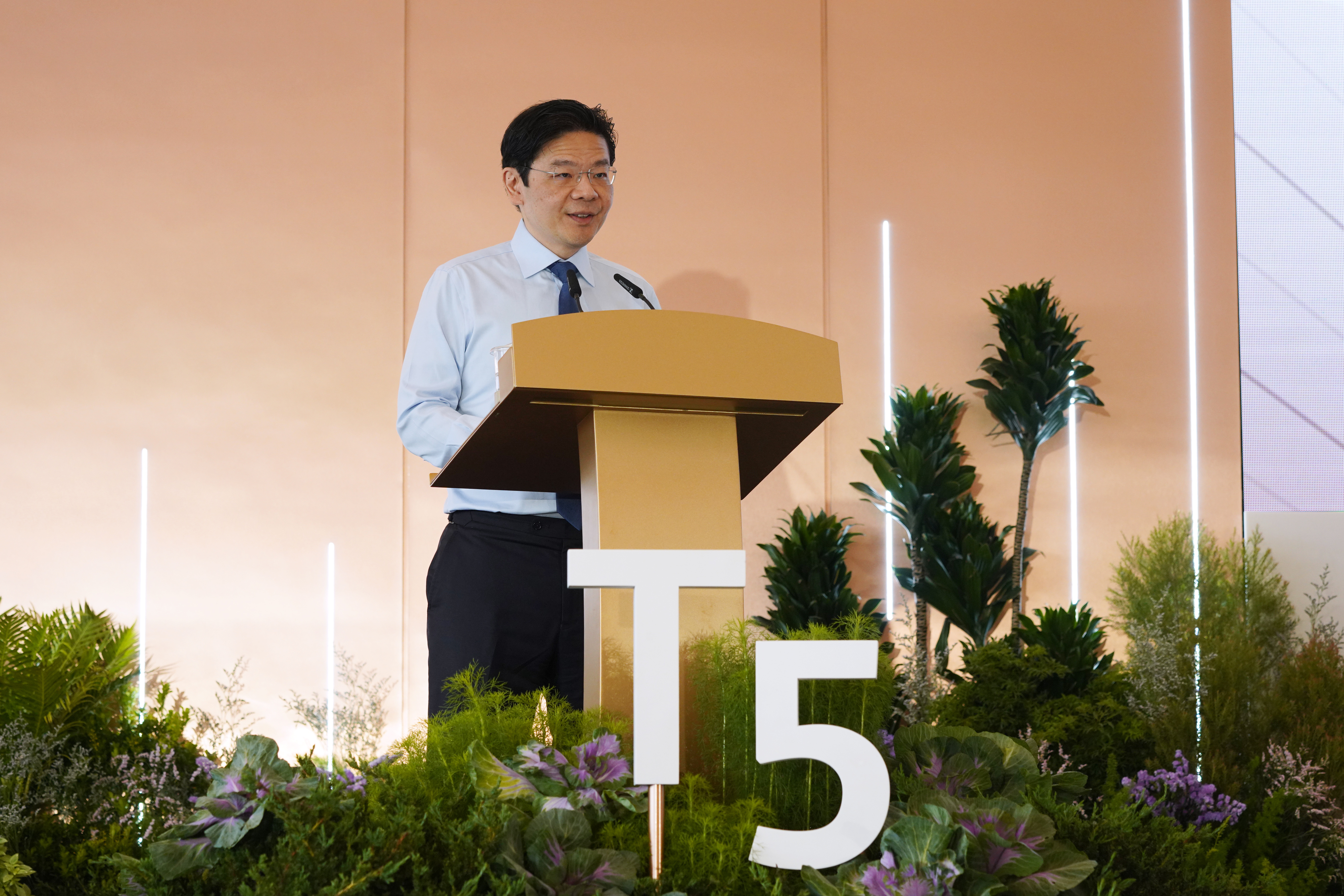
Singapore’s Changi Airport, routinely ranked one of the world’s best, broke ground Wednesday on a huge new terminal that will accommodate millions more passengers a year as it copes with a prolonged surge in post-COVID travel.
Earlier in May, Changi announced S$4.8 billion ($3.7 billion) in construction contracts for Terminal 5 and plans to award a third later this year. Total construction costs will eventually hit the tens of billions of dollars, according to Changi Group.
In its first phase, Terminal 5’s capacity of 50 million will nearly double Changi’s record 68.4 million passenger movements for the year ended March 31. It will expand Changi’s list of destinations to 200 from 170, the airport said. Changi currently operates more than 7,200 flights weekly.
ALSO READ: Singapore’s Changi Airport to raise flying fees to fund upgrade
“Singapore must ensure its air hub remains competitive,” Prime Minister Lawrence Wong said at the groundbreaking ceremony. Global rivalry is sharpening as other countries invest significantly in modernizing their airport infrastructure and adjacent cities, he added.
As one of the world’s busiest airports, Changi has movie theaters, rooftop pools and even a butterfly garden — and has clinched nearly 700 awards recognizing its amenities, comfort and service quality. The expansion is part of an airport building boom elsewhere in Asia, with regional air passenger demand set to rise in the coming decades.
Terminal 5 is expected to be operational by the mid-2030s, more than two decades since plans were first announced, and after a two-year delay due to the pandemic. It will be built in two phases according to air traffic growth, on a development of 1,080 hectares — or roughly four square miles, almost as large as Changi’s current total land area.
READ MORE: Singapore sees safe reopening of Changi as key to survival
There have also been some lessons from COVID. The space will be designed to operate as smaller sub-terminals when needed, and will be equipped with systems that reduce disease transmission. To cope with manpower constraints, the mega-terminal seeks to automate operations by trialing baggage robots and aircraft tracking powered by artificial intelligence.
The terminal will also use a cooling system that lowers emissions and support a fully electric airside fleet of transport vehicles.


